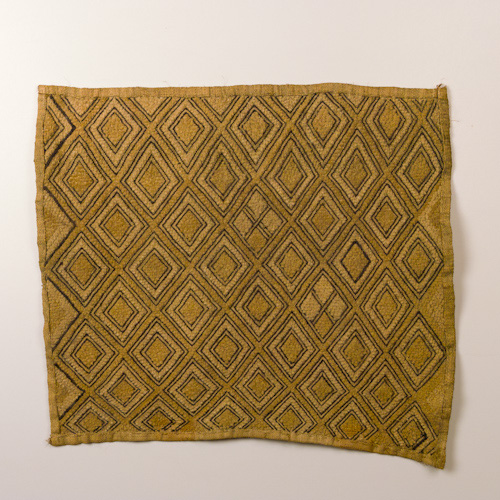
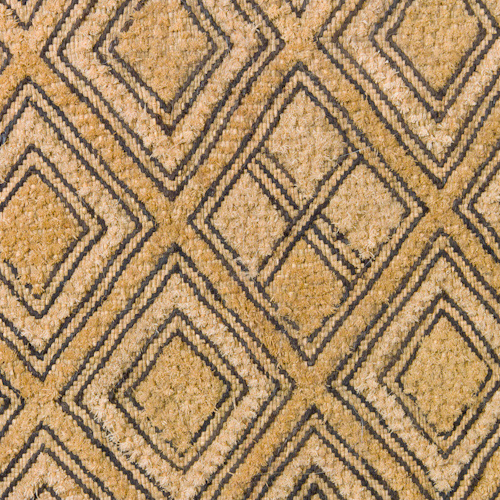

17″ x 17″ (larger diamond)
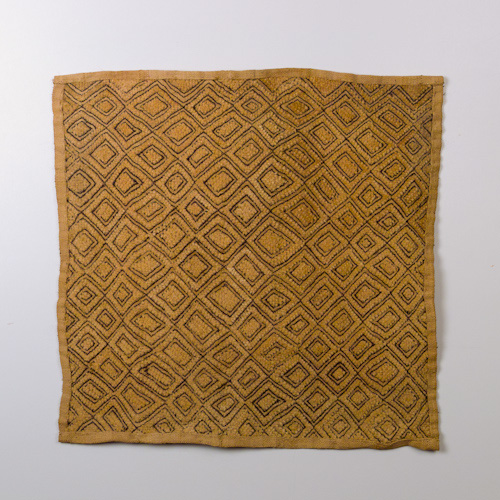
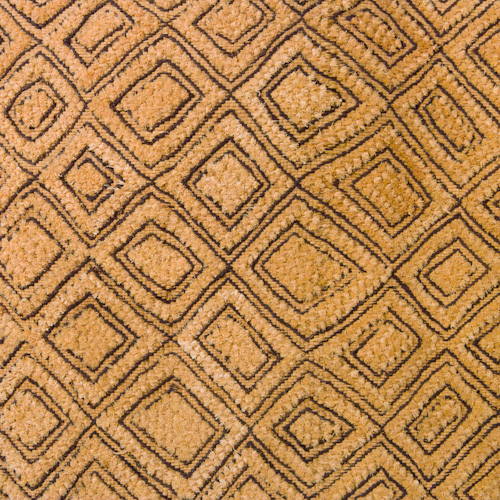
18″ x 18″ (small diamond)
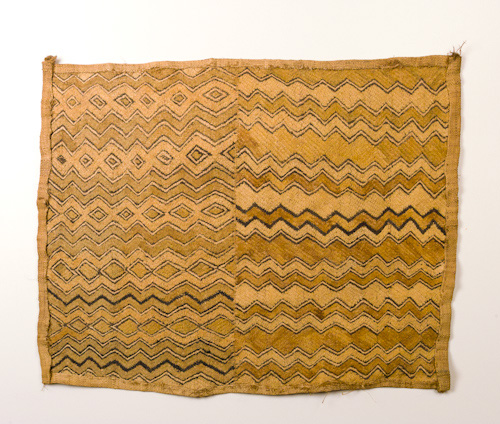
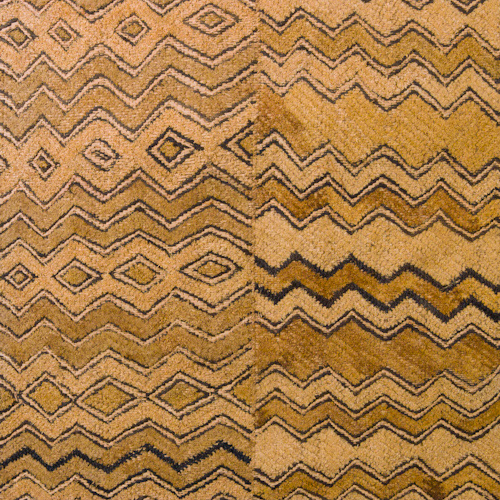
18″ x 23″ (zig zag)
The patterns on these three vintage pieces of grass and raffia Kuba cloth are simple yet so intricate given their hand-woven origin. We take much for granted while technology reduces the time involved in the design, planning, and the actual creation of the textiles which provide us with warmth, comfort, or embellishment. The technique employed in making Kuba cloth is similar to that of making a hand knotted carpet or the weaving of a kilim. Rather than knotting or weaving wool, raffia palm is used. The two sides appear different the darker dyed grass pattern is more defined on the front side than the back. Functional, the cloths sometimes serve as individual floor mats.
These Kuba cloths or floor mats are from Zaire, now known a the Democratic Republic of Congo. The process is all by eye and memory. The cloth squares are first woven by the men and then embellished by the women.The center of the design is a cut pile embroidery, they insert tufts of grass into the weave and then clip. Over time, the textured relief becomes more matted.
The African Conservancy states that, “it takes about a month of regular work for a woman to complete a small square of Kuba embroidery using a laborious technique that includes dying, detailed needlework and clipping individual tufts. Except for novices, designs are created as the crafter proceeds, usually elaborating a new combination from the more than 200 familiar patterns known designs, most which are identified by name. The same patterns are used on other Kuba art forms, including wood sculpture, metalworking, mat making, and women’s body scarification. Although the regular interlacing on the background cloth promotes a regular and symmetrical design, Kuba artists favor an improvisational, fluid effect that plays with deliberate asymmetries and pattern variation, creating the exquisite workmanship that distinguishes this native art form.”
The cloth’s pattern is symbolic, tied to the after-life. The precision and correctness of the pattern is also significant, enabling the clan member to be recognized by ancestors in the after-life. The cloths are prized as heirlooms to be passed down from generation to generation.
The abstract patterning is said to have been a “source of inspiration to artists such as Klee, Picasso, and Braque. Matisse was such a fan that he displayed pieces of his extensive Kuba cloth collection on the walls of his studio.”
More specific ethnographic information regarding the process and significance may be found by visiting the site of The African Conservancy.